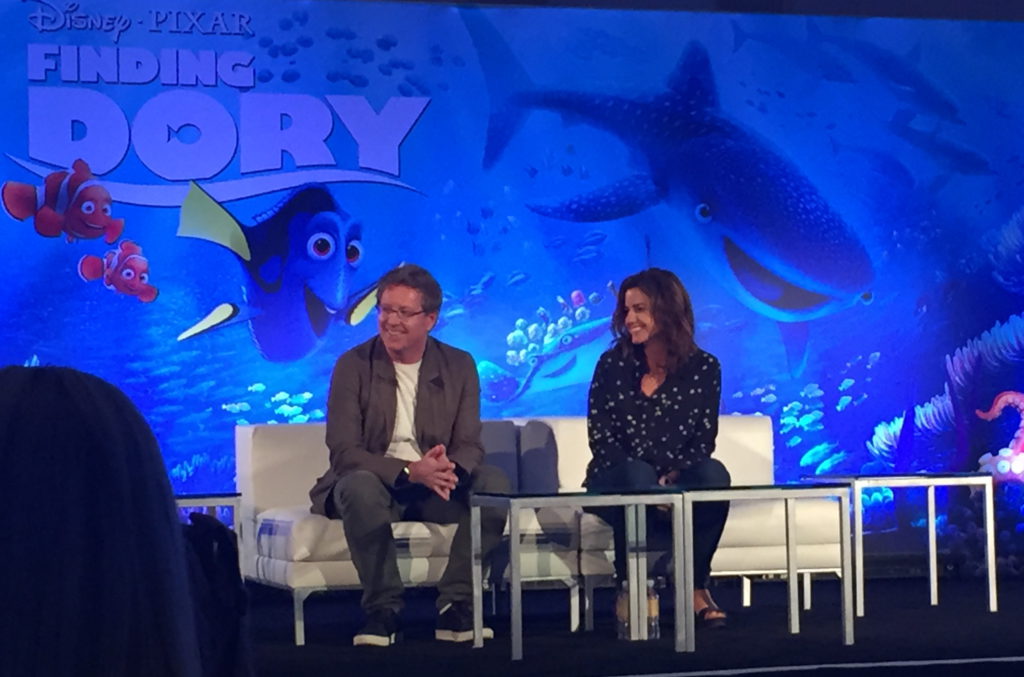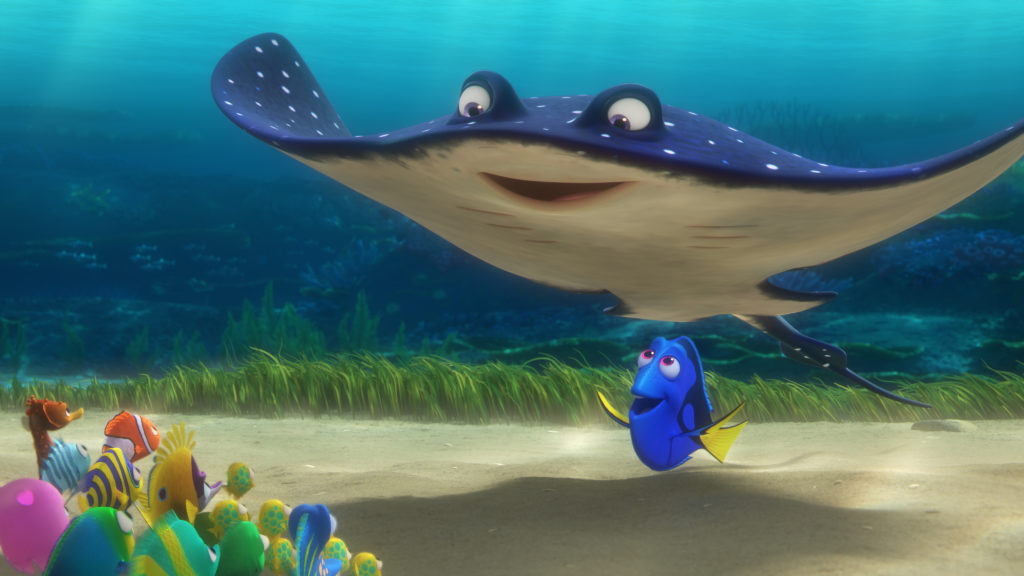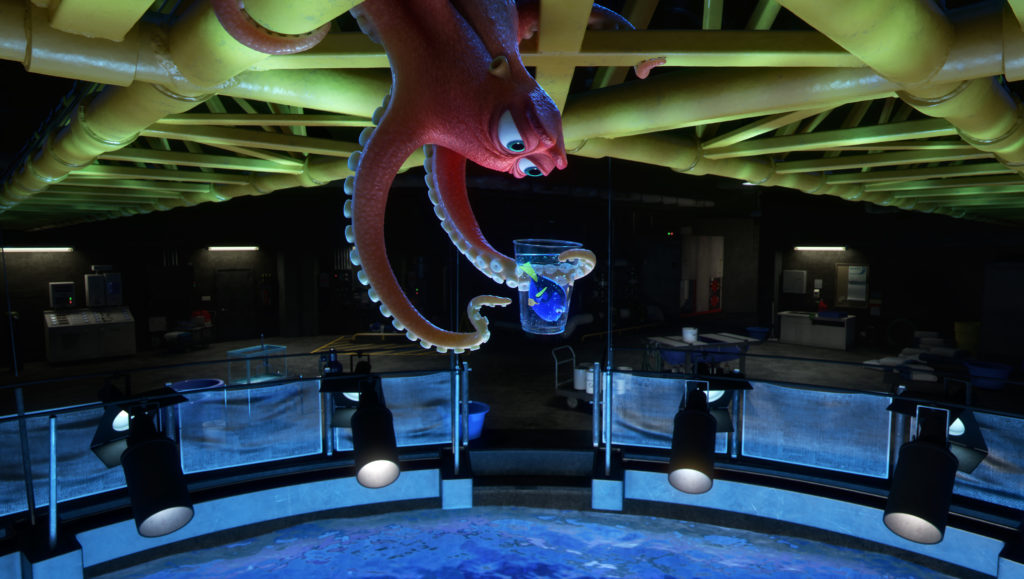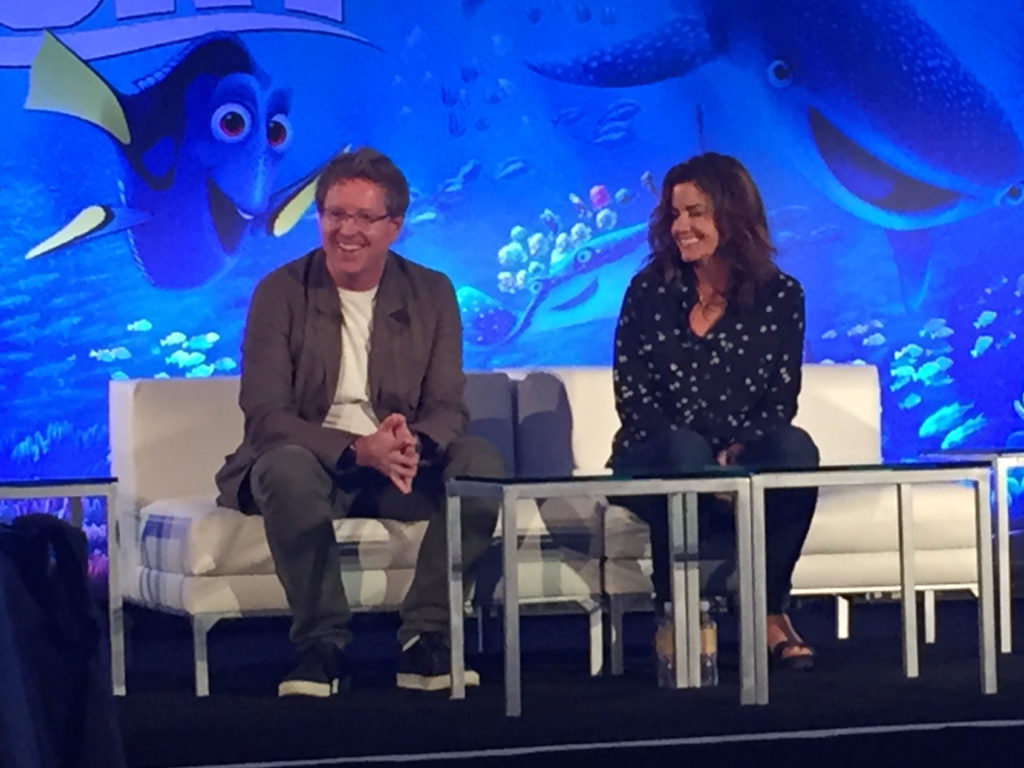A few years ago, Finding Nemo director Andrew Stanton found he was worried about Dory. Granted, it wasn’t a concern about her appearance in the 2003 hit film. As far as he and Pixar were concerned, that story was complete. But after watching it again several years later, he realized that Dory needed closure. Together with producer Lindsey Collins he decided to make another movie to do just that.
For Dory, that closure would come only after she learned that you are truly not at peace until you can accept yourself for who you are. And Dory, Stanton and Collins believed, had to do this all by herself. In Finding Nemo she was the co-pilot in life, granting grace to those around her while denying it to herself. “Just Keep Swimming” wasn’t a song made up on the spur of the moment—it was taught to her.
Deciding which of the original characters would make that journey with her was one of the early challenges of Finding Dory. As much as Stanton insisted that the story would tell them who should return, there were other forces at play. The Germans wanted sharks. The studio needed Crush (to get the main characters across the ocean with a minimum of fuss). And the producers themselves wanted the tank gang. In fact, for quite some time they were part of a minor but elaborate subplot involving Marlin, until Stanton reluctantly realized that they were detracting from the main story. Fortunately, four years of development left lots of time to correct wrong decisions.
The new cast was another story. As each of the film’s supporting characters was developed, the filmmakers were delighted to find that they were able to cast their first choices in each role. Ed O’Neil, according to Collins, was perfect for Hank the octopus (septapus?), because he was gruff, but squishy. His recording sessions had to be wedged into his busy schedule, and it wasn’t until he saw some finished product at the D23 Expo that he realized he really was a major character. “You are the Dory of this movie,” Stanton assured him.
Collins loved working with Eugene Levy and Diane Keaton as Dory’s parents, Charlie and Jenny. First, though, the writers had to lose the idea that the whole family had short-term memory loss. Apparently writing scenes for three characters that forget everything at a moment’s notice is ultimately frustrating. Two other newcomers are the lolling sea lions Fluke and Rudder. Stanton pointed out that Idris Elba and Dominic West were perfectly capable of performing convincing American accents, but he liked the idea that the two would be a pair of “lazy Brits.” (Besides, he said, he really just wanted to do a reunion of The Wire.) Producer favorites also included Becky, a “train wreck” of a bird that comes through in a pinch, as well as Crush and a gregarious clam, both coincidentally voiced by Andrew Stanton.
A more familiar voice heard in Finding Dory is Sigourney Weaver, playing, well, Sigourney Weaver. As the soothing voice of the public service announcements in the aquarium that makes up most of the setting of the film, Weaver’s recognizable name was originally inserted as a throw away gag in story pitches. As the gag stayed and stayed, the producers finally decided they had better see if the actress was willing to go along with the joke. After being assured that a whole new generation of kids would think of “Sigourney Weaver” in an entirely different way, she agreed to take the role.
After the open ocean of Finding Nemo, audiences might be surprised to find so much of the plot of Finding Dory unfolding within a public Aquarium. Stanton admitted that this was arrived at not as part of a master plan, but rather somewhat circuitously. It all began with his desire to set part of Finding Nemo in a kelp forest—which didn’t fit its coral reef setting. For the director, the forest is the setting for fairy tales and happily ever after. And, a kelp forest inevitably suggested the west coast of the United States. If this was to be Dory’s home, how to explain her unique abilities. In exploring the story, they realized the answers lay in the Monterey Bay Aquarium. And it was there they discovered another major theme: Rescue—Rehabilitation—Release.
The aquarium also let them introduce Hank the octopus. According to producer Collins, in talking to aquarium personnel, there were more stories told about the octopus, nature’s “jack-of-all-trades,” than any other creature. For the animators, the word octopus carried an entirely different set of challenges. According to Stanton, the first shot alone took six months to animate, and Hank’s entire role consumed two years of effort. The producers readily admitted that this character was something they could not have achieved 13 years ago.
Another challenge that filmmakers face in 2016 is the intense scrutiny of social media. After the first substantive trailer for Finding Dory was released, there was an immediate flurry of speculation that two women who briefly appeared in an Aquarium scene were feature animation’s first ever lesbian couple. Stanton neither confirmed nor denied, saying that the observations were more a reflection of the times in which we live—and that one could look back through many animated features and find all kinds of couples. Producer Collins opinion? “Maybe. We didn’t ask them.”




